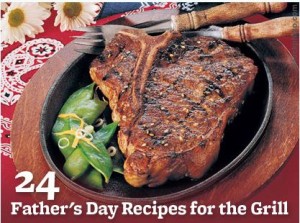 I will admit that when I saw this article in the paper this morning, I was a little surprised to learn that Reader’s Digest was still in business. I was very dyslexic as a child, and to help me get through that, I took “language training” classes after school (thanks Mom and Dad for that, by the way) and as part of that, my teacher Mrs. Bassett had me read articles from Reader’s Digest and then she would quiz me on comprehension ( I still remember the one about the prehistoric fish the Coelacanth they caught off the coast of Madagascar – I thought that was one of the coolest things I had ever heard).
I will admit that when I saw this article in the paper this morning, I was a little surprised to learn that Reader’s Digest was still in business. I was very dyslexic as a child, and to help me get through that, I took “language training” classes after school (thanks Mom and Dad for that, by the way) and as part of that, my teacher Mrs. Bassett had me read articles from Reader’s Digest and then she would quiz me on comprehension ( I still remember the one about the prehistoric fish the Coelacanth they caught off the coast of Madagascar – I thought that was one of the coolest things I had ever heard).
In any event, I found the article fascinating for two reasons.
 First, the fact that they hired Mary Berner, who sounds a little bit like the second coming of Katie Couric, to establish a contemporary market for the publication. Berner was quoted as saying “it’s traditional, conservative values: I love my family, I love my community, I love my church” and that clearly puts middle America in the crosshairs of their focus. So I love that they are aware of their need to rethink the publication and who their customer is and who will read it. I went out to their web site to grab some images and the main page had this photo of Father’s Day recipes that sounded very much in line with what Ms. Berner was saying. I can’t wait to hear how they do.
First, the fact that they hired Mary Berner, who sounds a little bit like the second coming of Katie Couric, to establish a contemporary market for the publication. Berner was quoted as saying “it’s traditional, conservative values: I love my family, I love my community, I love my church” and that clearly puts middle America in the crosshairs of their focus. So I love that they are aware of their need to rethink the publication and who their customer is and who will read it. I went out to their web site to grab some images and the main page had this photo of Father’s Day recipes that sounded very much in line with what Ms. Berner was saying. I can’t wait to hear how they do.
The second thing that interested me about the story is that Reader’s Digest adds another layer to the discussion of what is the future of publishing and content. The article points out that Reader’s Digest was a standard just like Life magazine, The Saturday Evening Post, and others, and so as we see newspapers shutting down and sites like Twitter now being discussed as potentially viable news sites, the conversation starts to take on some new dimensions where a couple of things have clearly started to happen. For at least ten years now news web sites have posted the one line article summaries that get our attention, and we click on the ones we like, and in a certain sense Twitter has empowered us to decide what we think is interesting and newsworthy and so as people develop followings, the more popular people on Twitter drive what people want to read.
At the same time there are reading devices like the Amazon Kindle, which by itself is interesting because of it’s ability to hold so many books, but more interestingly is the fact that you can buy individual chapters of books (much like we have seen in the music industry selling individual songs). The trend I think we will want to follow is the “size” of the content that people want to consume. If you look back at old issues of The New York Times, a lot of their articles used to be a lot longer.
What makes Reader’s Digest so interesting is that they have always been in the business of condensing stories, so beyond Ms. Berner’s question of who her market is, I think a more interesting question for everyone is what size article or story will appeal. At this point, the article size question will have a different answer for different demographics, but I think it’s a really interesting set of trends and topics and I will continue to pay close attention as so many organizations rethink the future of publishing, or “content consumption” (maybe I am saying that because that picture of a steak is making me hungry) which is what the larger umbrella term might become. . .
-Ric
[…] Original post: Reader’s Digest dusts itself off, and raises interesting questions […]